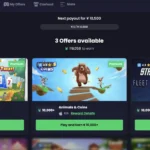After the age of 35, both career and personal life may start to experience decline—this is a natural part of life’s cyclical development. However, many people entering this phase resist acknowledging it, holding onto the hope of recreating their past peak moments. This approach often leads to frustration, as the same thinking that created past successes is unlikely to solve new problems.
As Einstein once said, “We cannot solve our problems with the same thinking we used when we created them.” To overcome challenges, we must adopt a higher level of thinking. This means proactively planning for a “second curve” in life, where new strengths and opportunities are discovered. Transformation and downturns are inevitable; the key is to face them head-on.
Contents
Step 1: Self-Reflection and Leveraging Past Experiences
Self-reflection is the first crucial step to understanding where your strengths lie. It’s about converting past experiences into new capabilities.
Before the age of 35, most people rely on specific technical skills for career advancement, whether it’s through employment or running a business. However, as time goes on, relying solely on those skills becomes unsustainable. The good news is, by this stage, you’ve likely accumulated industry and life experience, which can serve as valuable resources. These experiences can be repurposed to open new doors.
For example, a friend of mine found her second career online. She was once a regular teacher in a second-tier city. Though teaching had prestige, the income wasn’t substantial. To supplement her income, she explored online opportunities—paid knowledge-sharing, community management, and even product promotion. Her breakthrough came when she consistently created content—writing, livestreaming, and making short videos. Soon, local businesses approached her for help in selling their products. This consistency also caught the attention of influencers, offering her even bigger opportunities. Now, she works remotely for a well-known online team, successfully transitioning her career.
The skills she developed as a teacher—communication, content creation, and expression—helped her succeed in a different context. Self-reflection allowed her to recognize and leverage these strengths.
Step 2: Investing in Personal Growth
At a low point, the most affordable and effective investment you can make is in your own growth. And reading is a great place to start. For the cost of a few books, you can gain insights from others’ years of experience and equip yourself with a new knowledge system.
Another powerful investment is in practical courses taught by experts. These courses often provide up-to-date, actionable information, and summarize years of hands-on experience. If you want to succeed, there’s no shortcut: it takes deliberate practice, patience, and mastery of scientific methods.
At the “0-to-1” stage of any venture—whether career or business—most of your hope must be placed in yourself. No one else can give you lasting success. Achieving it requires understanding that simply knowing is not enough; taking action is what counts.
Step 3: Investing in Opportunities
A good opportunity will always come with competition. In fact, opportunities without competition are not worth pursuing. The challenge is not avoiding competition but rather setting yourself apart by excelling in the core competencies needed to succeed.
Many people ask, “Can I still make money through blogging, Pinterest, or affiliate marketing, given how many people are already doing it?” The answer lies in your personal advantage. What makes you stand out? If you don’t have an edge, what can you do to cultivate one? Success depends on your ability to take action, grow, and consistently improve.
Good opportunities are rarely free. Paying for something—whether it’s a course, mentorship, or tools—is often the lowest barrier to entry. Many misunderstand the concept of paying as simply spending money. But those who know how to invest wisely in themselves also understand how to earn. The higher-quality the opportunity, the higher the barrier to entry, be it money, skills, or resources.
Step 4: Building Relationships and Networks
Investing in your network is just as crucial as investing in yourself. Many great opportunities are only accessible within private networks. If you’re still relying on job boards and sending out resumes after 35, it may be a sign that you’ve been too passive in the first half of your career. The people who still have projects in hand often do so because of referrals and connections built over time.
On the flip side, those who lack strong networks find themselves anxious and without options. Their social circles may be limited to colleagues and family members, leaving them without fallback options in tough times. Building and nurturing meaningful connections is essential for long-term success.
Step 5: Taking Action
The final and most critical step is taking action. Many people dream of entrepreneurship but hesitate to make a move. The best approach is to start small. You don’t need to open a physical store or quit your job. You can try running an online business—selling products or building your personal brand—alongside your current job.
What type of side business is ideal? Look for something that allows you to earn both money and experience. The initial investment should be low, and the barriers to entry should be manageable. Once you achieve some success, you can gradually scale up.
Step 6: Lifelong Learning
Lifelong learning has become an essential skill for thriving in today’s fast-changing world. Every industry shifts every 3-5 years, and if you don’t update your knowledge, you’ll be left behind.
Improving your knowledge through reading, networking, and attending events can help you keep up with these shifts. But remember to distinguish between meaningful learning and wasted effort. Focus on applying what you learn to real-world situations, setting goals, and using feedback to refine your understanding.
Life is a spiral of ups and downs. Our efforts should be aimed at delaying the inevitable decline. The road is tough, but with continuous learning and action, we can rise to new heights together.


